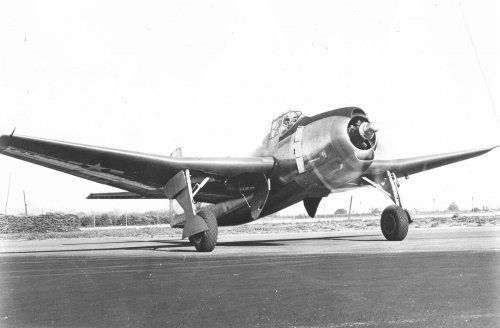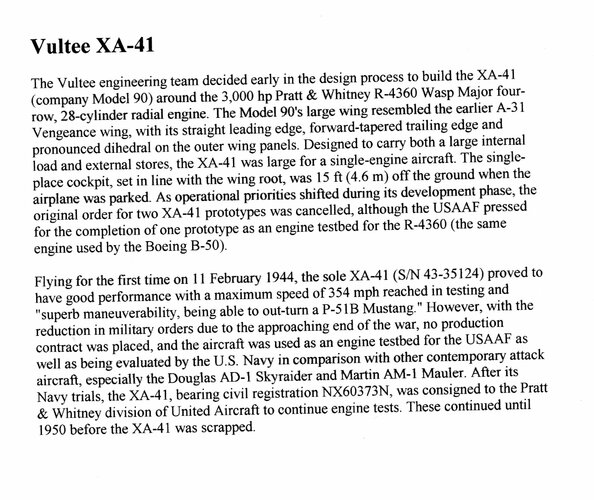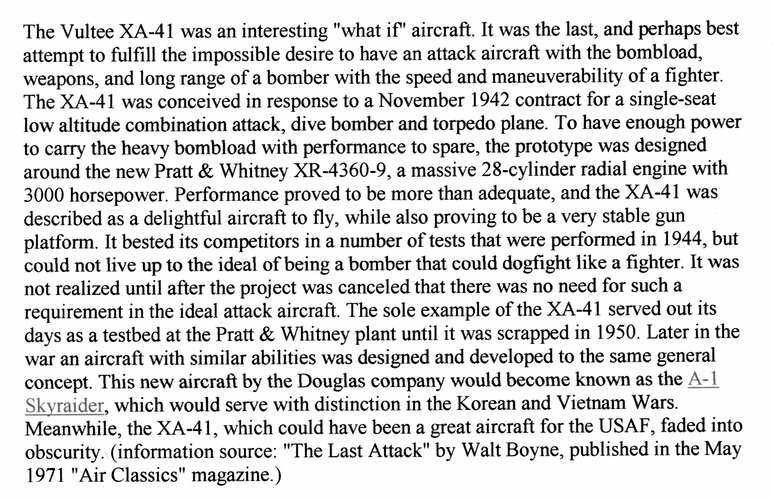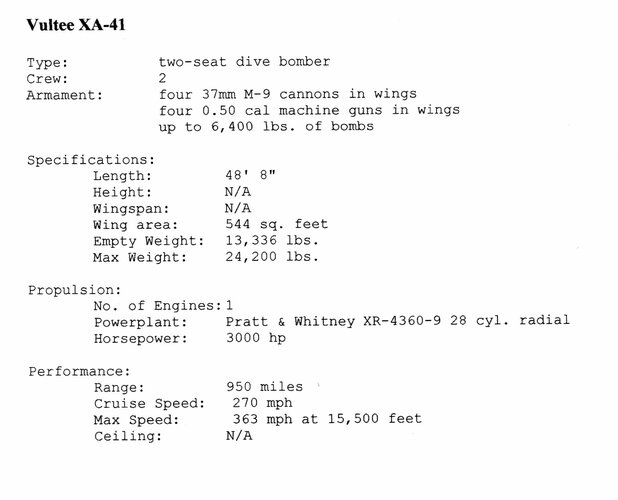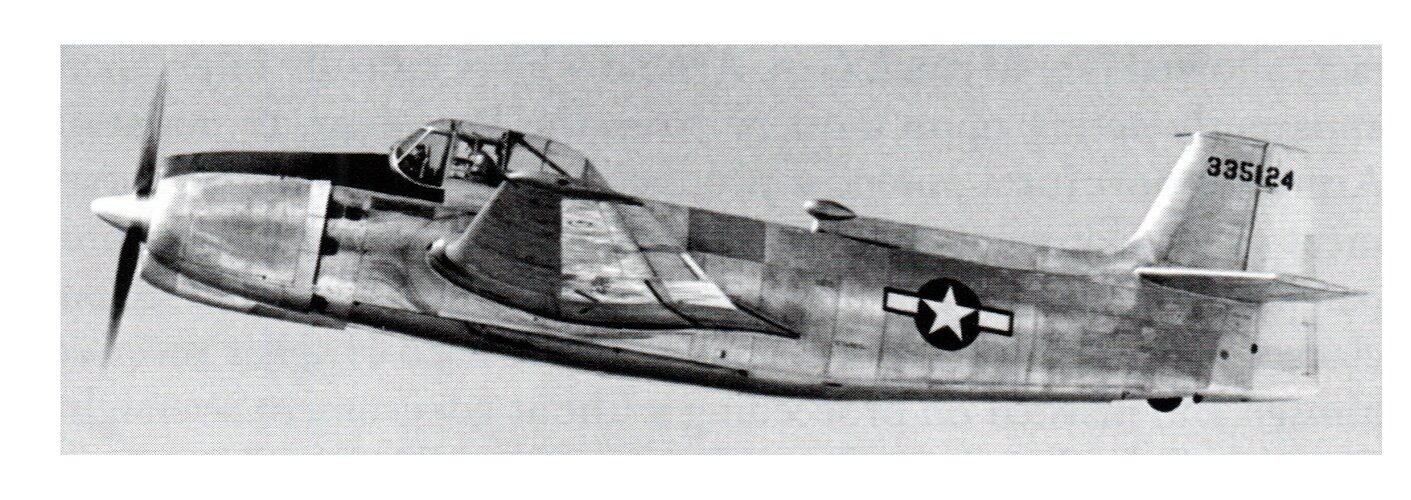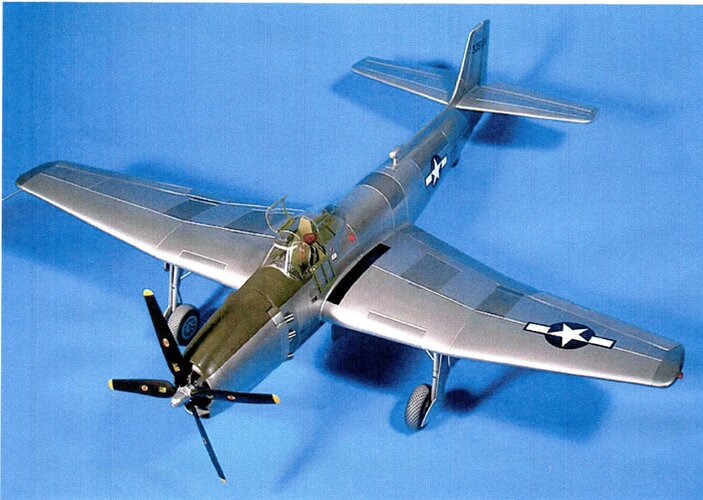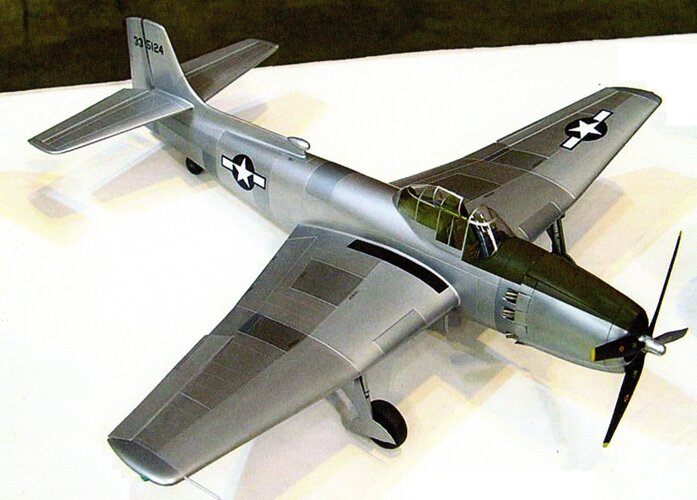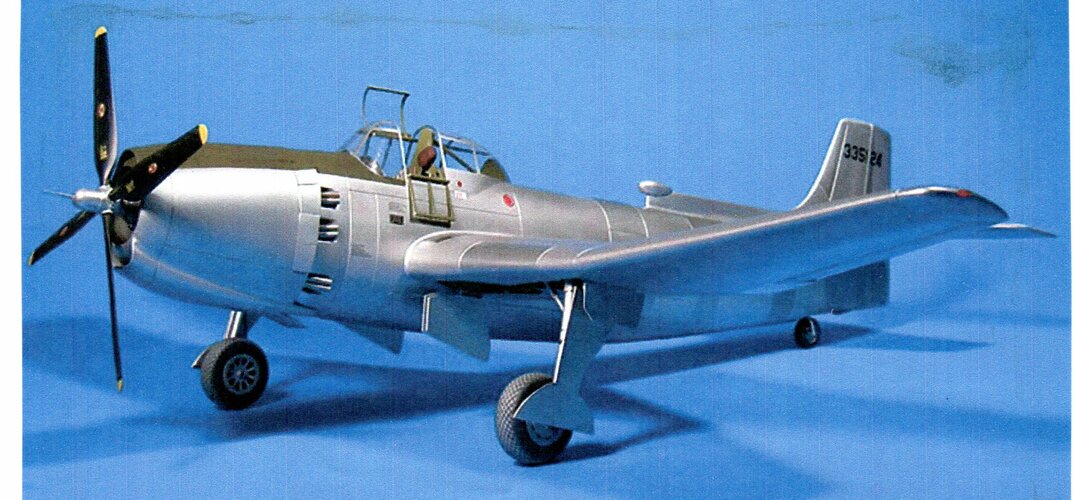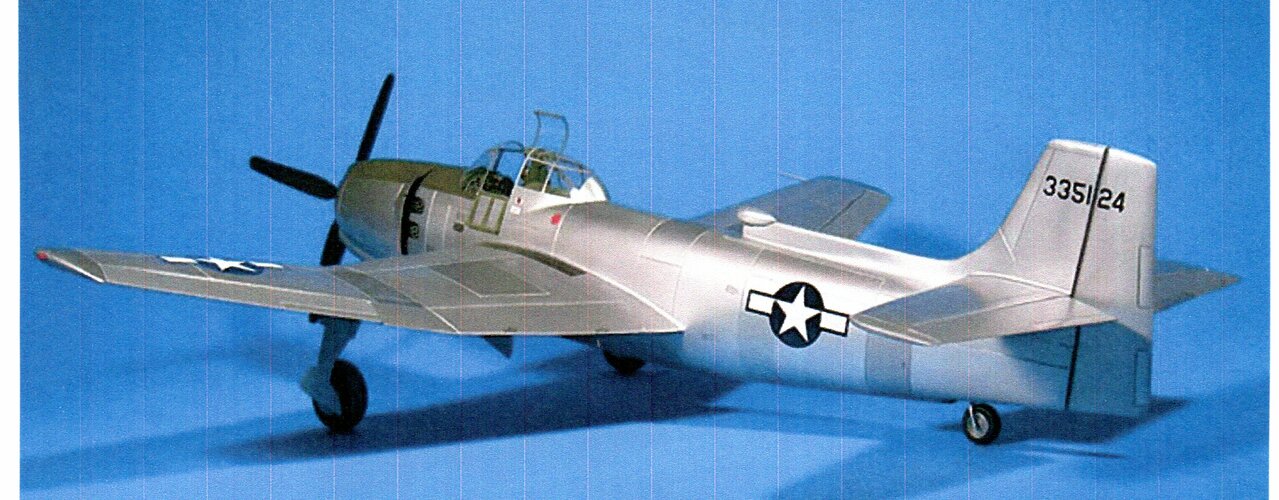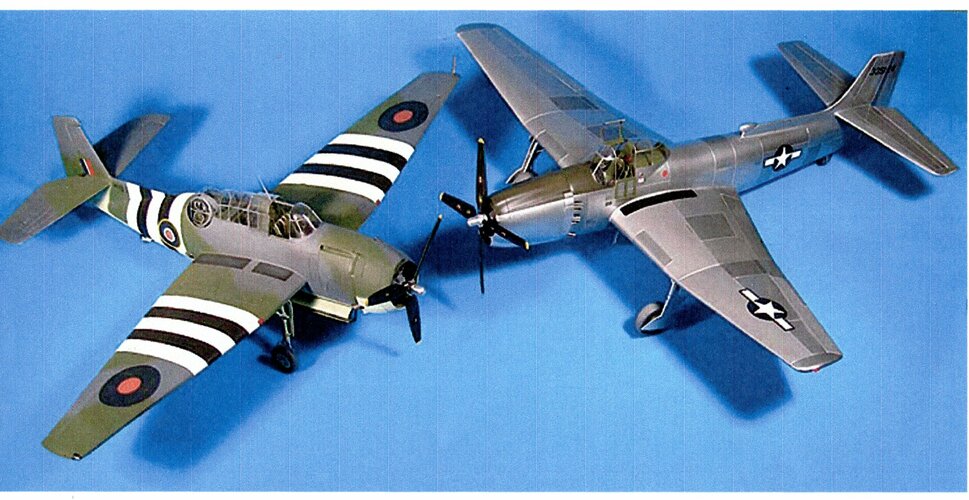Convair XA-41
Last revised December 20, 2001
The Vultee XA-41 was the result of a mid-1942 USAAF request for a design study for a single-seat dive bomber powered by the 3000 hp Pratt & Whitney XR4360 Wasp Major 28-cylinder radial engine. A contract for two aircraft, designated XA-41, was placed with Vultee on November 10, 1942. A satisfactory mockup inspection took place in March of 1943. At this point, the USAAF decided that it no longer needed dive bombers and changed the contract to call for a low-level ground attack aircraft instead. This caused a delay, and on April 30, 1943, a new contract was issued calling for two prototypes (43-35124 and 43-35125) and one ground test airframe. By this time, Vultee had merged with Consolidated to form Consolidated Vultee, usually known as Convair.
Another change of plans occurred at the end of September of 1943. At that time, the USAAF concluded that it no longer needed a specialized low-level ground attack aircraft, since existing fighters had proved that they were capable of performing this role. The XA-41 project seemed well on its way to cancellation, but the USAAF decided to keep it running as a flight testbed for the new R-4360 engine. The completion of one prototype (which was almost 3/4 ready at the time) was authorized on November 20, with the other one being cancelled. In an attempt to make the XA-41 into something more than just a test aircraft, Vultee proposed to convert it into a long range fighter, but the USAAF expressed no interest, since it was finding that existing designs were able to perform this role as well.
The XA-41 was a single-engined, low winged aircraft with a fairly large, low-mounted wing. The wing had a straight leading edge and a trailing edge with forward sweep. The outer wing panels had a dihedral of eight degrees. The main landing tear members were attached to the leading edges of the inner wing section, and retracted into wells in the forward leading edges of the inner wings. A single large framed bubble-shaped canopy enclosed the pilot's cockpit, which was located well forward and accorded excellent visibility. A large internal bomb bay was located at the bottom of the deep fuselage. The proposed armament was four 0.5-inch Browning machine guns and two 37-mm M-9 cannon in the wings. Alternatively, eight guns in various combinations could be carried.
The XA-41 (43-35124) took off on its maiden flight at March Field, California on February 11, 1944. The XA-41 proved to have a good performance, and it was transferred to Eglin Field in Florida for evaluation. The low-altitude maneuverability was better than that of the P-51B Mustang, but the USAAF nevertheless found it too slow for the low altitude attack role. In addition, at that time the USAAF preferred twin-engined designs for its attack aircraft (e.g. the A-26 Invader), and no further consideration was given of any production of the XA-41.
The plane was flown by the Navy at Patuxent River, and it was then delivered to Pratt & Whitney for tests of a variable-speed supercharger. Pratt & Whitney eventually bought the plane for themselves and assigned the commercial registration of NX60373. It was eventually scrapped at Hartford, Connecticut in 1950.
Specification of Convair XA-41
Engine: One Pratt & Whitney R-4360-9 Wasp Major 28-cylinder air-cooled radial, rated at 3000 hp for takeoff, 2400 hp at 13,500 fet.. Performance: Maximum speed 363 mph at 15, 500 feet, 333 mph at sea level. Initial climb rate 2730 feet/minute. An altitude of 10,000 feet could be attained in 4.3 minutes. Service ceiling 27,000 feet. Range 8000 miles with 1000 pound bombload. Ferry range 3000 miles with 1140 US gallon extra tanks. Weights: 13,400 pounds empty, 24,200 pounds maximum gross. Dimensions: Wingspan 54 feet 0 inches. Length 48 feet 8 inches, Height 14 feet 6 incheswing area 540 square feet. Armament: Four 0.50 inch Browning machine guns and two 37-mm M-9 cannon in the wings plus two 500 lb bombs. Alternatively, eight guns in various combinations and up to 3200 pounds of bombs could be carried.
Sources:
American Combat Planes, Third Enlarged Edition, Ray Wagner, Doubleday, 1982.
General Dynamics Aircraft and Their Predecessors, John Wegg, Naval Institute Press, 1990.

